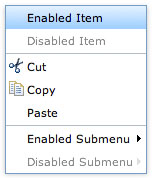Visual Studio Code has taken the crown of most used text editor, at least in JavaScript spheres. VSCode is fast, feature-filled, and supports thousands of plugins to boost productivity. Developers can also tweak hundreds of settings to enrich functionality. One such feature is the autoSave feature.
A few months ago I changed my editor setup to autosave code as I type. Every app works that way, code editors should too.
— Christoph Nakazawa (@cpojer) October 18, 2023
I recently had to disable it briefly. Feels so backwards to explicitly press Save via cmd+s.
Here is how you can change VS Code to auto save: pic.twitter.com/qmjUBXNX35
To autoSave files with VS Code, you can add the following to your text editor config:
{
"files.autoSave": "afterDelay",
"files.autoSaveDelay": 200
}
Just about every Operating System and web action is instant these days, so eliminating the need for manual save just makes sense. Big thanks to my old MooTools colleague Chris Nakazawa for calling this out!

Introducing MooTools Templated
One major problem with creating UI components with the MooTools JavaScript framework is that there isn’t a great way of allowing customization of template and ease of node creation. As of today, there are two ways of creating: new Element Madness The first way to create UI-driven…

7 Essential JavaScript Functions
I remember the early days of JavaScript where you needed a simple function for just about everything because the browser vendors implemented features differently, and not just edge features, basic features, like
addEventListenerandattachEvent. Times have changed but there are still a few functions each developer should…

Duplicate DeSandro’s CSS Effect

Create a Context Menu with Dojo and Dijit
Context menus, used in the right type of web application, can be invaluable. They provide shortcut methods to different functionality within the application and, with just a right click, they are readily available. Dojo’s Dijit frameworks provides an easy way to create stylish, flexible context…
Source link
